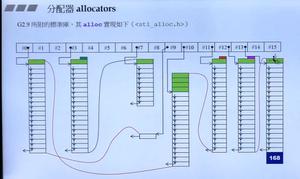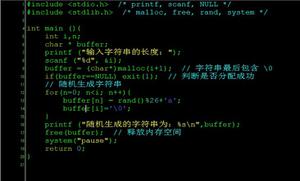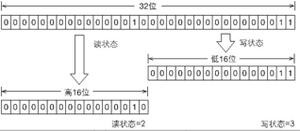malloc如何在多线程环境中工作?
典型的malloc(对于x86-64平台和Linux
OS)是在开始时幼稚地锁定互斥锁并在完成后将其释放,还是以更巧妙的方式将互斥锁锁定在更精细的级别,从而减少了锁争用?如果确实采用第二种方法,那么该如何做?
回答:
glibc 2.15经营多个分配 场所
。每个竞技场都有自己的锁。当线程需要分配内存时,malloc()选择一个竞技场,将其锁定,然后从中分配内存。
选择竞技场的机制有些复杂,旨在减少锁争用:
/* arena_get() acquires an arena and locks the corresponding mutex. First, try the one last locked successfully by this thread. (This
is the common case and handled with a macro for speed.) Then, loop
once over the circularly linked list of arenas. If no arena is
readily available, create a new one. In this latter case, `size'
is just a hint as to how much memory will be required immediately
in the new arena. */
考虑到这一点,malloc()基本上看起来像这样(为简便起见编辑):
mstate ar_ptr; void *victim;
arena_lookup(ar_ptr);
arena_lock(ar_ptr, bytes);
if(!ar_ptr)
return 0;
victim = _int_malloc(ar_ptr, bytes);
if(!victim) {
/* Maybe the failure is due to running out of mmapped areas. */
if(ar_ptr != &main_arena) {
(void)mutex_unlock(&ar_ptr->mutex);
ar_ptr = &main_arena;
(void)mutex_lock(&ar_ptr->mutex);
victim = _int_malloc(ar_ptr, bytes);
(void)mutex_unlock(&ar_ptr->mutex);
} else {
/* ... or sbrk() has failed and there is still a chance to mmap() */
ar_ptr = arena_get2(ar_ptr->next ? ar_ptr : 0, bytes);
(void)mutex_unlock(&main_arena.mutex);
if(ar_ptr) {
victim = _int_malloc(ar_ptr, bytes);
(void)mutex_unlock(&ar_ptr->mutex);
}
}
} else
(void)mutex_unlock(&ar_ptr->mutex);
return victim;
该分配器称为ptmalloc。它基于Doug
Lea的早期工作,并由Wolfram Gloger维护。
以上是 malloc如何在多线程环境中工作? 的全部内容, 来源链接: utcz.com/qa/413529.html







